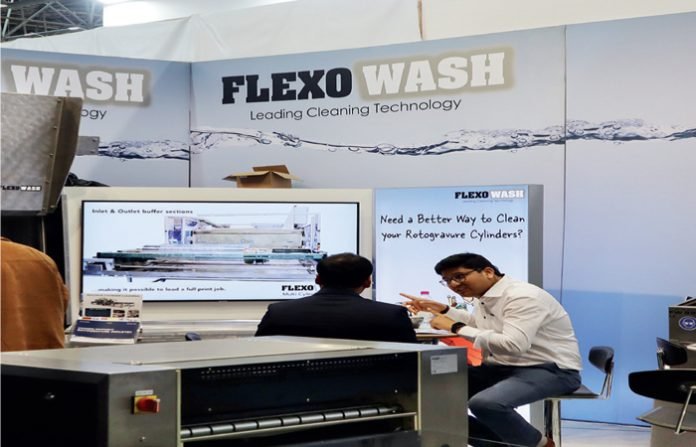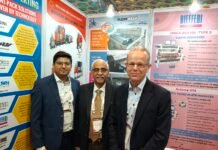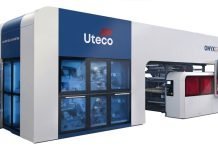“We have been building machines that are ATEX compliant for more than 10 years, so we can comment from a position of authority,” said Anders Kongstad, Technical director at the Danish manufacturer. To understand the background one has only to look at the meaning of ATEX – it’s an acronym for ‘Atmospheric Explosion’ and a reminder of how potentially dangerous the solvents and flammable liquids that are used in the printing process can be. No wonder then that it has been the subject of an EU Directive (94/9-EC) since 1996.
Flexo Wash began by building the pneumatic style because they were simple ‘plug-in and play’ machines that required little maintenance and were easy to run. But a reliance on compressed air, which can be expensive or difficult to source in certain countries, combined with the lower washing pressure, means that for most converters the way forward is electric power.
“Up to 2011 we manufactured only pneumatic machines and currently have more than 100 installed world- wide. Since then, we have installed a good number electric machines and will add substantially to that number in 2015,” said Kongstad. The extra power of the electrical system is particularly useful to gravure printers, where the parts require a more arduous cleaning process. It can also offer a short high-intensity wash program with the PLC unit integrated with the ventilation system and the distiller.
The switch over from pneumatic to electrical caused some confusion in the market about compliance. “Pneumatic systems do not need to be certified by TÜV Nord, so people assumed they did not comply, but this was never the case as the directives distinguish between the electrical and non-electrical systems. The two different types of system need to comply with different types of approvals. Flexo Wash has implemented an extensive quality management system to handle the requirements for building ATEX machines. All units have compliance via QC management and a QC system that is audited each year,” he explained, adding that in any 12-month period there are usually five or six updates to the applicable standards, “which is a bit like trying to hit a moving target,” he quipped!
So, what constitutes an ATEX compliant room? It is all about risk control and safety. The room generally comprises a washing machine, distiller, LEL control, light, house installations and a ventilation system. Flexo Wash machines include cooling, which reduces evaporation and improves safety as well as cutting operating costs. The latest machines have intelligent ventilation systems, which combined with sealed washing machine tanks,
lower the solvent consumption.
“One of the most frequent problems we encounter in production areas is lack of space. Companies can have a blind spot when it comes to allocating space for anything other than printing – and of course, some just don’t have much space to start with. That’s why we have designed our equipment to have as small a footprint as possible,” he commented.
“Solvent-free used to be less efficient and there are still issues with recycling, but these will largely be overcome in the next decade. The liquids are also more expensive, but there is hardly any evaporation, and these liquids have a longer life, so the consumption cost is similar, and the machinery is also cheaper to manufacture. Yes, some things will change, but slowly, and only in certain markets – we foresee there being a large number of solvent-based printers for years to come,” commented Kongstad.












